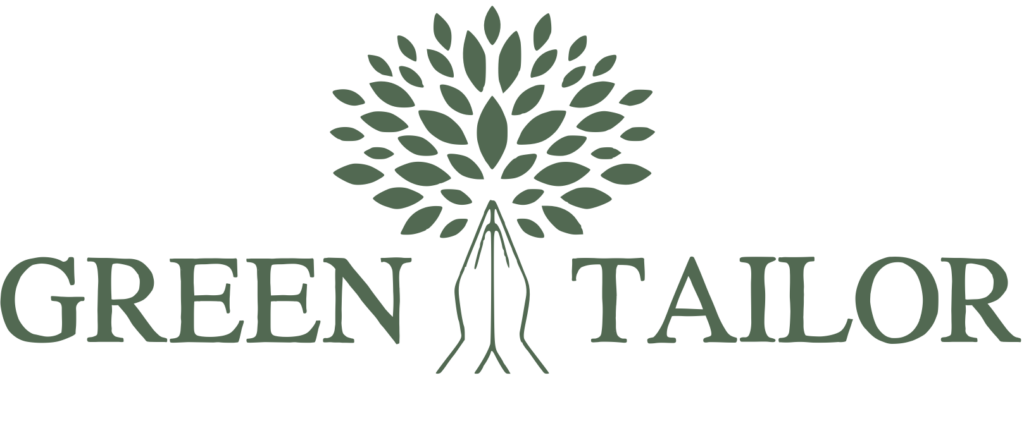Fabrics are everywhere and are an essential part of our daily lives. They have come from various sources, such as natural fabrics (cotton, linen, silk, and wool) and synthetic fabrics (polyester, nylon, and rayon). They impact the feel, quality, and durability of the fabric depending on the source, quality, fiber type, and manufacturing process.
The common methods used in fabrics to create them are weaving and knitting. Learn the difference between woven and knitted fabric, their types, characteristics, and the most common weaves in this article.
What is a woven fabric?
Two sets of yarns are interlaced at right angles to one another to create a woven fabric. This technique creates a tight and sturdy structure by using warp yarns, which run vertically, and weft yarns, which run horizontally. This interlacing process creates a variety of patterns that depend on the weaving technique used.
Woven fabrics can be made from either natural fibers or synthetic fibers, or a combination of the two.
Common types of woven fabric weaves
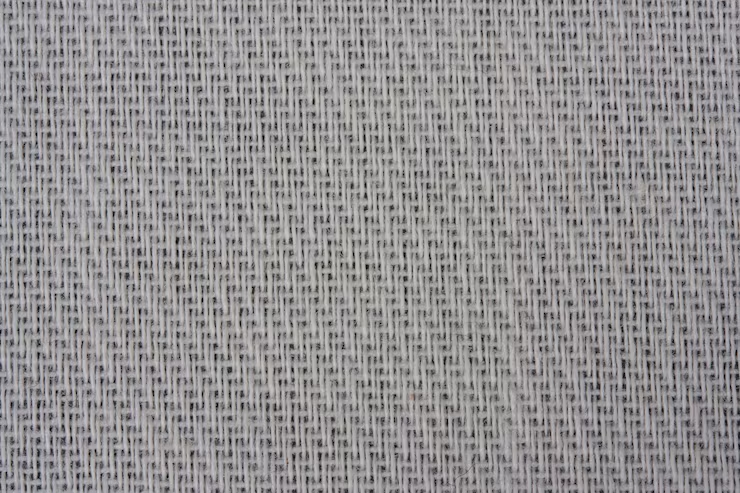
Plain weave fabrics
The plain weave is the simplest and most general type of weave, which accounts for approximately 50–60% of all woven fabric production. In this weave, alternately over and under the warp yarns pass the weft yarns. This simple over-under structure produces a flat and smooth surface.
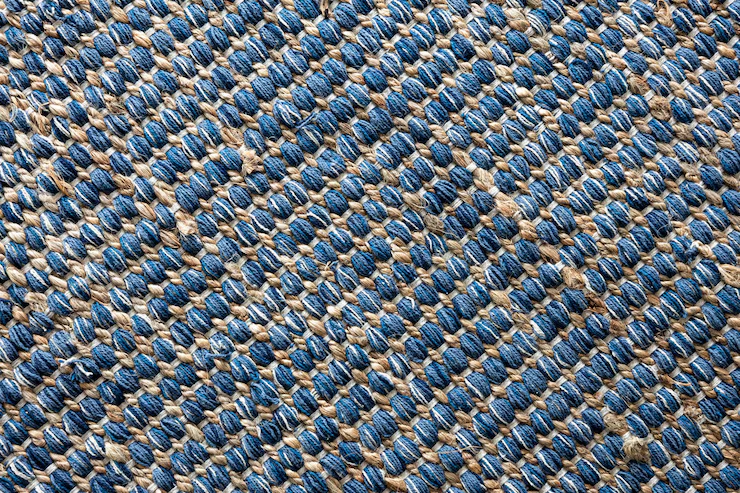
Twill weave fabrics
Twill weave is a type of fabric weave pattern in which the weft yarn creates a diagonal rib or wale on the fabric’s surface by passing over two or more warp yarns and then under one or more of them. The fabric has a textured surface due to this weave structure, which also makes it wrinkle-resistant and long-lasting.
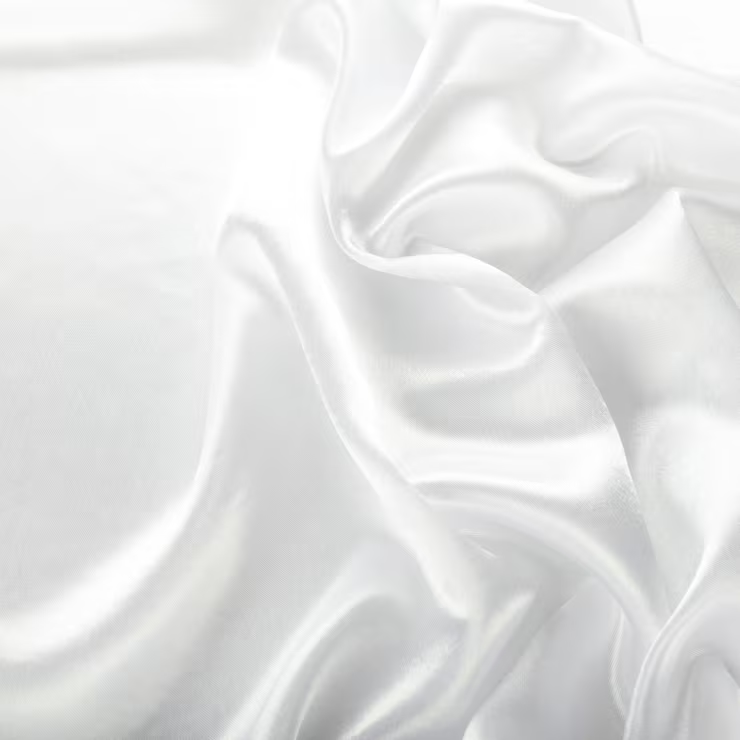
Satin weave fabrics
Satin weave is created by weaving the weft yarns over a few warp yarns and then under one. Weft yarns are crosswise threads, and warp yarns are lengthwise threads. This pattern reduces the number of visible interlacings to create a smooth and shiny surface.
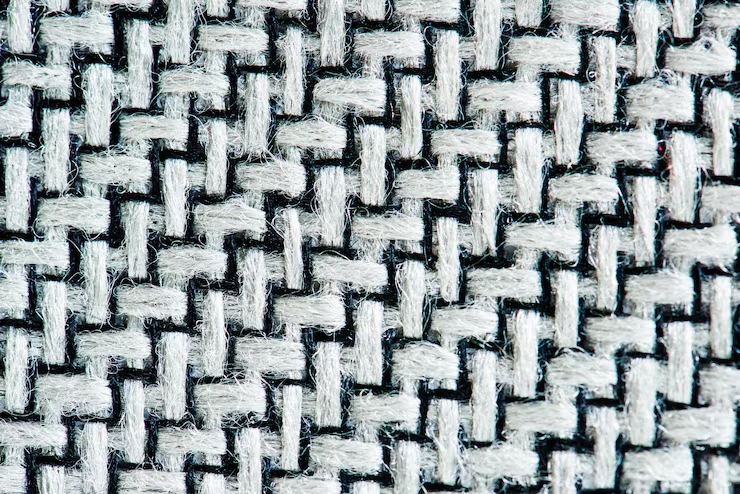
Dobby weave fabrics
A dobby weave creates small or geometric patterns in the fabric. This is achieved using a special dobby loom that lifts and lowers threads in a specific manner to create these patterns.
Characteristics of woven fabric
Woven fabrics are strong and hold their shape well. They don’t stretch much, so they feel structured and firm rather than soft and flowy. Because of this, they can wrinkle easily and may need regular ironing to stay neat.
Woven fabrics tend to be slightly rough to the touch in comparison to soft, elastic knit fabrics but are extremely hardy and can withstand lots of washings without losing their shape or creating fuzz balls. They’re also simple to sew because they don’t stretch with stitches. Woven fabrics tend to be more expensive, as they take more time and effort to make than knitting.
What is a knit fabric?
Knit fabric is made by interlooping yarns together using needles, rather than interlacing them like in woven fabrics. This looping structure gives knit fabrics stretchiness, softness, and flexibility.
Types of knit fabric weaves
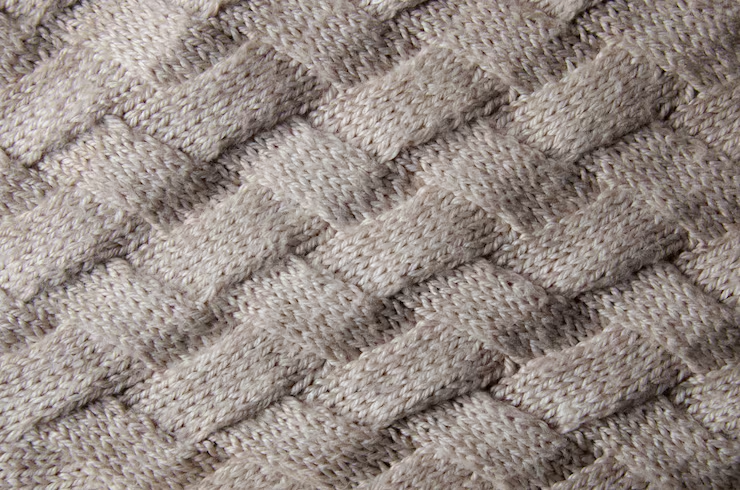
Weft knitting
In weft knitting, the yarn runs horizontally, and each new row of loops is built on top of the previous one. This is the most common method used in T-shirts, scarves, sweaters, and socks. Weft knits are usually very stretchy and comfortable, but they can easily unravel if a loop breaks.
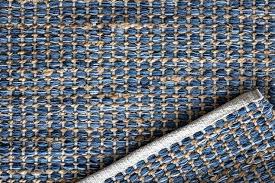
Warp knitting
In warp knitting, the yarn runs vertically, and loops are formed along the length of the fabric. This type of knit is often used in more durable fabrics, like swimwear, lingerie, and sportswear. Warp knits don’t stretch as much as weft knits but are less likely to unravel.
Characteristics of knit fabric
Knit fabrics are highly elastic and give long stretch in all four directions. The fabrics have a smooth and soft texture, which gives a breathable feel.
It is thermoregulating, as it keeps you cool in hot weather by trapping heat and warm on chilly days, which depends on the type of fiber used.
Knitted fabrics naturally resist wrinkling due to their stretch and flexibility. They tend to return to their original shape on their own, without the need for ironing or special treatment.
Difference between woven and knitted fabrics
| Features | Woven fabric | Knitted fabric |
|---|---|---|
| Structure | Made by interlacing warp and weft yarns | Made by interlooping yarns using needles |
| Stretchability | Low stretch unless elastane is added | Naturally stretchy in all directions |
| Wrinkle resistance | Wrinkles easily | Naturally wrinkle-resistant |
| Production speed | Slower manufacturing process | Faster to produce on circular knitting machines |
| Fraying | Edges can fray and need finishing | Doesn’t fray because of its interlocking loops |
Which is better, woven or knit
Regardless of whether they are knit or woven, fabrics made out of natural fibers are usually a top option. They provide comfort, breathability, and eco-friendliness that other synthetic fabrics can’t offer.
The best fabric varies according to your individual requirements. If you are in search of something stretchy, flexible, and cozy, knit fabrics are the right option. However, if you need one that provides stability or a sleek look, woven fabrics are a better option.
At Green Tailor, we proudly offer both woven and knit fabrics and products made from high-quality natural fibers like organic cotton, linen, silk, and wool.
All our natural fabrics and products are ready for dyeing with natural dyes, which are safe for you and better for the environment. Our collections are available worldwide with no minimum order quantity (MOQ).
For any custom orders, like sustainable dyeing, fabric sourcing, or yarn sourcing, our MOQ starts from 100 meters/piece. For more information, feel free to contact us at [email protected].
